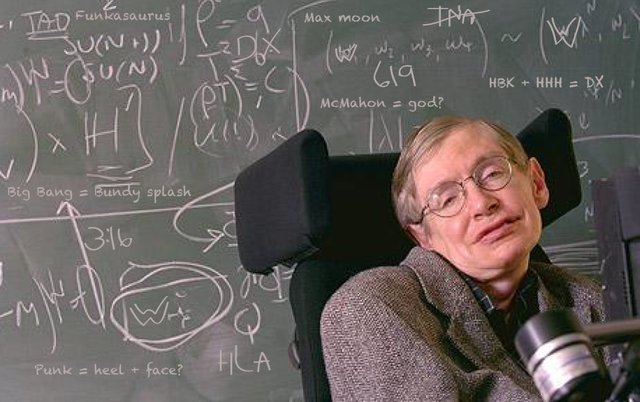British physicist and mathematician Stephen Hawking has made fundamental contributions to the science of cosmology—the study of the origins, structure, and space-time relationships of the universe.
Stephen Hawking | From 1 To 75 Years Old | The Theory of Everything | Stephen Hawking Thesis
Born: January 8, 1942
Oxford, England
English scientist, physicist, and mathematician
Early life
Stephen William Hawking was born on January 8, 1942, in Oxford, England. His father, a well-known researcher in tropical medicine, urged his son to seek a career in medicine, but Stephen found biology and medicine were not exact enough. Therefore, he turned to the study of mathematics and physics.
Hawking was not an outstanding student at St. Alban's School, nor later at Oxford University, which he entered in 1959. He was a social young man who did little schoolwork because he was able to grasp the essentials of a mathematics or physics problem quickly. At home he reports, "I would take things apart to see how they worked, but they didn't often go back together." His early school years were marked by unhappiness at school, with his peers and on the playing field. While at Oxford he became increasingly interested in physics (study of matter and energy), eventually graduating with a first class honors in physics (1962). He immediately began postgraduate studies at Cambridge University.
Graduate school
The onset of Hawking's graduate education at Cambridge marked a turning point in his life. It was then that he embarked upon the formal study of cosmology, which focused his study. And it was then that he was first stricken with Lou Gehrig's disease, a weakening disease of the nervous and muscular system that eventually led to his total confinement in a wheelchair. At Cambridge his talents were recognized, and he was encouraged to carry on his studies despite his growing physical disabilities. His marriage in 1965 was an important step in his emotional life. Marriage gave him, he recalled, the determination to live and make professional progress in the world of science. Hawking received his doctorate degree in 1966. He then began his lifelong research and teaching association with Cambridge University.
Theory of singularity
Hawking made his first major contribution to science with his idea of singularity, a work that grew out of his collaboration (working relationship) with Roger Penrose. A singularity is a place in either space or time at which some quantity becomes infinite (without an end). Such a place is found in a black hole, the final stage of a collapsed star, where the gravitational field has infinite strength. Penrose proved that a singularity could exist in the space-time of a real universe.
Drawing upon the work of both Penrose and Albert Einstein (1879–1955), Hawking demonstrated that our universe had its origins in a singularity. In the beginning all of the matter in the universe was concentrated in a single point, making a very small but tremendously dense body. Ten to twenty billion years ago that body exploded in a big bang that initiated time and the universe. Hawking was able to produce current astrophysical (having to do with the study of stars and the events that occur around them) research to support the big bang theory of the origin of the universe and oppose the competing steady-state theory.

Hawking's research led him to study the characteristics of the best-known singularity: the black hole. A black hole's edges, called the event horizon, can be detected. Hawking proved that the surface area (measurement of the surface) of the event horizon could only increase, not decrease, and that when two black holes merged the surface area of the new hole was larger than the sum of the two original.
Hawking's continuing examination of the nature of black holes led to two important discoveries. The first, that black holes can give off heat, opposed the claim that nothing could escape from a black hole. The second concerned the size of black holes. As originally conceived, black holes were immense in size because they were the end result of the collapse of gigantic stars. Hawking suggested the existence of millions of mini-black holes formed by the force of the original big bang explosion.
Unified field theory
In the 1980s Hawking answered one of Einstein's unanswered theories, the famous unified field theory. A complete unified theory includes the four main interactions known to modern physics. The unified theory explains the conditions that were present at the beginning of the universe as well as the features of the physical laws of nature. When humans develop the unified field theory, said Hawking, they will "know the mind of God.
Hi! I am a robot. I just upvoted you! I found similar content that readers might be interested in:
https://www.youtube.com/watch?v=Px5nokKPCVsDownvoting a post can decrease pending rewards and make it less visible. Common reasons:
Submit